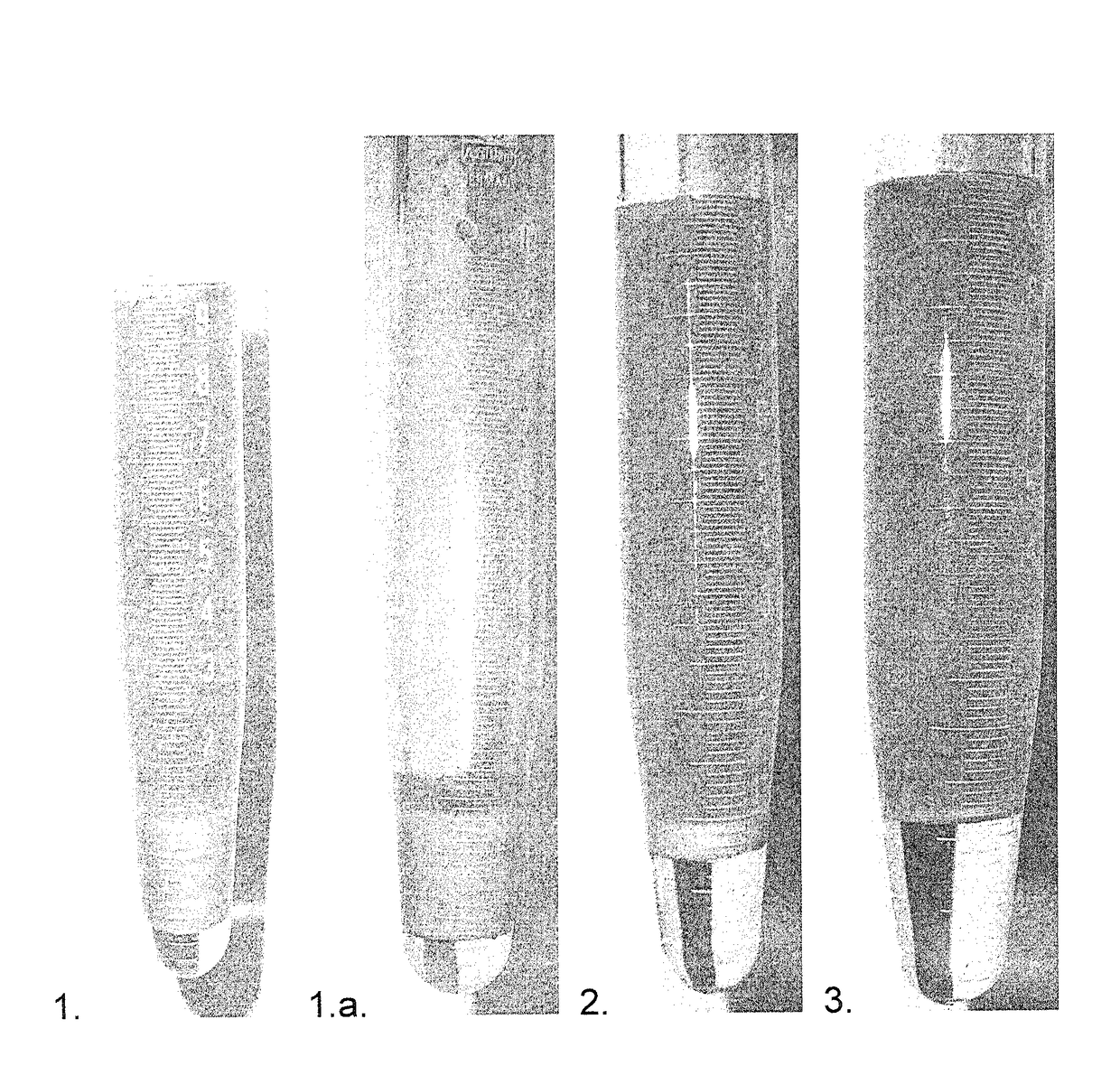Method for refining lipid phases, and use
a technology of lipid phase and lipid phase, which is applied in the field of lipid phase refining, can solve the problems of undesirable effects, inability to further reduce the absolute amount of color pigments, and negative impact on shelf life, etc., and achieves the effects of low cost, gentle on the product, and easy operation
- Summary
- Abstract
- Description
- Claims
- Application Information
AI Technical Summary
Benefits of technology
Problems solved by technology
Method used
Image
Examples
example 1
[0364]Canola oil, which was obtained by means of a screw press as a yellow-greenish slightly turbid raw oil, was analyzed for phosphorus content (ICP-EOS, iCAP 7400, Thermo-Fisher, Scientific, Germany). Further, an investigation for the presence of mucilages was performed by adding 1 ml of a 5 wt % sodium carbonate solution (pH 12.5) to 9 ml of the raw oil. The sample which was in a centrifuge glass was agitated (vortexed at 3,000 rpm) for 3 minutes. Subsequently, the sample was centrifuged at 3,000 rpm for 5 minutes. A semisolid emulsion layer that was 3 mm thick (corresponding to a volume of 0.3 ml or 3.0 vol %, respectively) located at of the water-oil phase boundary was observed. The acid number of the oil was determined by potentiometric titration (Titroline 7000 SI Analytiks, Germany) by means of an alcoholic KOH solution. The oil has a strong smell and a slight bitter taste.
[0365]After 200 kg of the raw oil was heated to 60° C., and a 75 vol % phosphoric acid solution was add...
example 2
[0371]Investigation on the Use of Nano-Emulsions for Oil Refining.
[0372]For this investigation jatropha oil was used which contains naturally very low concentrations of green dyes, but has an unpleasant odor and due to a high proportion of mucilages it is not possible to refine it by aqueous refining methods. Here the smell is intense, pungent and has an unpleasant species-specific character. The concentration of phosphorus was 78 ppm (mg / kg) and the acid number was 1.3 wt % (analytical method according to Example 1). The investigation for the presence of mucilages was carried out as in Example 1, using a water:oil ratio of 1:10. There was an emulsion layer of 0.7 ml (corresponding to 7.0 vol %) at the oil-water interface with only a small volume of free water. Jatropha raw oil (10 kg) was precleaned by aqueous extraction with a solution of sodium carbonate (concentration: 10 wt %, volume admixed: 3 vol %); mixing was performed with a propeller mixer (500 rpm for 30 minutes). Phase ...
example 3
[0383]Cold pressed rapeseed oil with the key parameters: phosphorus content 4.1 ppm (mg / kg), calcium 28 ppm (mg / kg), iron 2.5 ppm (mg / kg), free fatty acids 1.1 wt %, chlorophyll content 6.8 ppm (mg / kg), that had a clear appearance and a slightly green-yellowish color, and a mustard-like odor as well as an intensely rancid and bitter taste was used for the following investigation. The investigation for the presence of mucilages was negative (<0.1 ml / <1.0 vol %, for protocol see example 1). To each of 1000 ml oil, 30 ml of 0.5 M arginine solution was added. Mixing was carried out with A) a propeller mixer at 200 rpm for 30 minutes, B) with a propeller mixer at 800 rpm for 15 minutes, and C) with an Ultraturrax T18 at 24,000 rpm for 5 minutes. Then centrifugation with a beaker centrifuge was performed (5,000 rpm for 10 minutes). Oil analyses were carried out as described in Examples 1 and 2. In each case, 2 samples (20 ml) of the raw oil (RO) and the refined oils A) and C) were taken, ...
PUM
| Property | Measurement | Unit |
|---|---|---|
| diameter | aaaaa | aaaaa |
| temperature | aaaaa | aaaaa |
| temperature | aaaaa | aaaaa |
Abstract
Description
Claims
Application Information
 Login to View More
Login to View More - R&D
- Intellectual Property
- Life Sciences
- Materials
- Tech Scout
- Unparalleled Data Quality
- Higher Quality Content
- 60% Fewer Hallucinations
Browse by: Latest US Patents, China's latest patents, Technical Efficacy Thesaurus, Application Domain, Technology Topic, Popular Technical Reports.
© 2025 PatSnap. All rights reserved.Legal|Privacy policy|Modern Slavery Act Transparency Statement|Sitemap|About US| Contact US: help@patsnap.com



